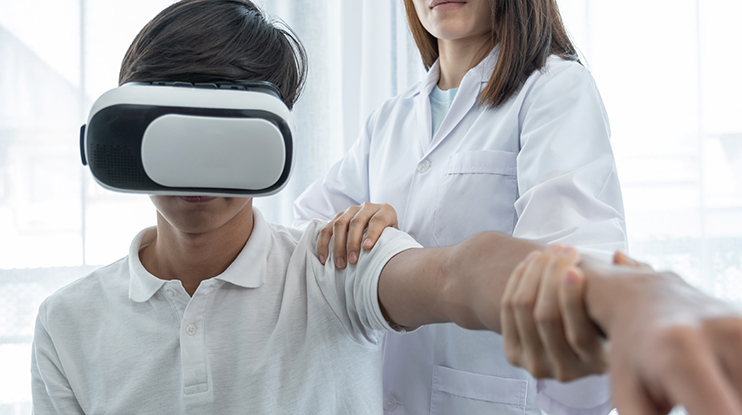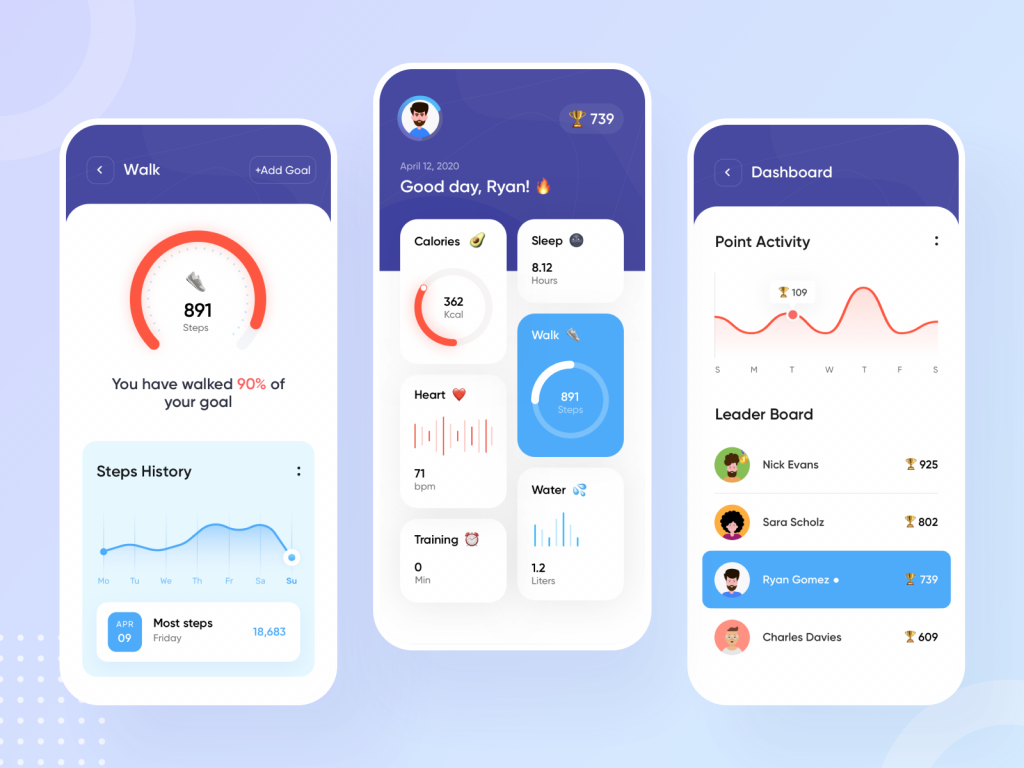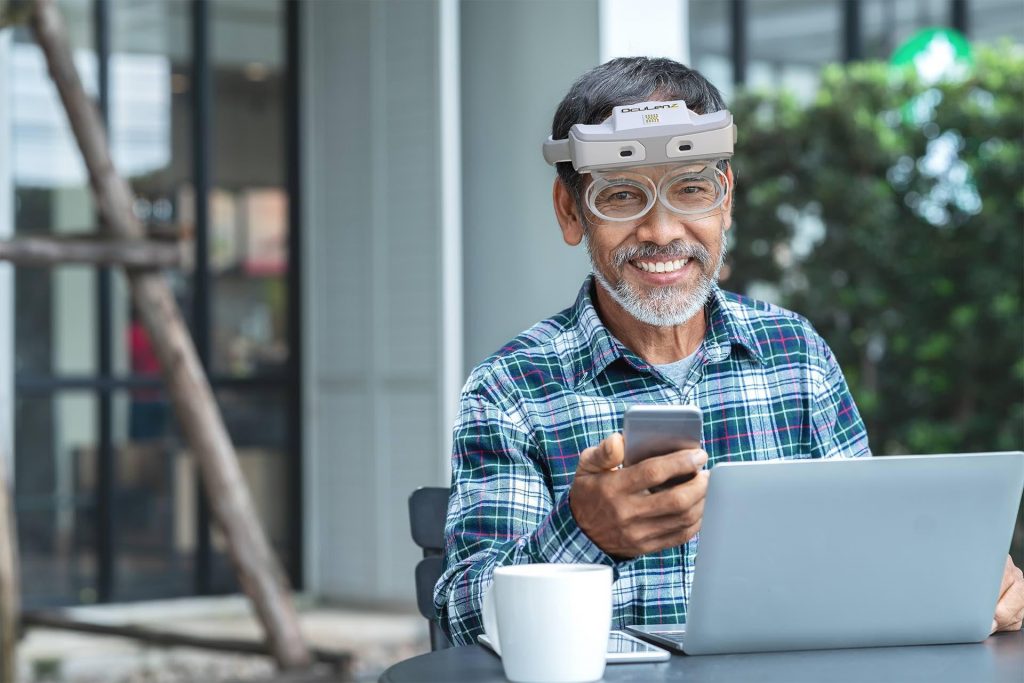Entertainment in medicine: 5 promising healthcare trends

Healthcare, as one of the most conservative industries in terms of adopting new technologies, is growing more digital and flexible. There are more and more solutions that a mere decade ago we couldn’t even imagine would be possible.
And here we are. Some features that seemingly don’t belong to healthcare at all, are widely used now in the industry. As healthcare is trying to be more user-friendly and client-centric, new cross-cutting trends appear.
While IoT for healthcare seems acceptable already, there are solutions that are still struggling to get approved for massive use in the medical industry. To highlight some promising trends, we gathered several examples of how the initially just-for-fun mechanisms and technologies serve a pretty much pragmatic purpose in professional healthcare projects.
Gamification in healthcare
Gamification is adding gaming algorithms to non-gaming apps. Gamification in health apps makes a kind of a quest out of the boring yet mandatory daily routines. For instance, users can get virtual rewards for taking pills, working out, walking, drinking water, etc.
The “rewards” can be virtual gifts, badges, medals, or virtual currency to be used in the app. Other gamification elements include:
- Storylines and characters
- Leaderboards
- Progress reports in charts, graphs, etc.
- Sharing success and progress within the app or on social media

Gamification in health apps is aimed at motivating users to take meds or complete other healthy lifestyle routines. In particular, patients with chronic diseases have to go through lengthy medical treatment periods and they tend to lose motivation to take meds on time.
Gamified elements shift the focus from the obsessive boring routines to unobtrusive and rewarding challenges, revitalizing the incentive to stick to the prescription. While it may seem unusual or inappropriate to have entertainment elements in apps dealing with chronic diseases, a study shows that gamification does help patients adhere. The same algorithms are used for fitness and wellbeing apps to help users save motivation and support their progress.
Interactive multimedia and gaming technologies in healthcare
Talking about 3D technology in healthcare, it’s usually meant 3D printing and bioprinting, while 3D modeling along with other gaming technologies is not so widely used in the professional field. There are medical game apps where users can play a doctor and diagnose or operate on virtual patients, yet the games are created “just for fun.”
Surprisingly, gaming technologies can be of assistance in professional healthcare. One of our clients proved that healthcare is no stranger to “non-academic” elements in quite “academic” medical projects.
A pharmaceutical company along with the healthcare app development company Vakoms is working on a professional healthcare app. The application features as many as three gaming technologies: 3D modeling, gaming engine Unity, and motion caption device Leap Motion. Despite the technology stack, the app still serves not entertaining, but educational purposes.
Here’s how it works. Potential users of the app — doctors and medical students — can interact with a 3D model of a human body. The detailed model includes the internal systems: cardiovascular, circulatory, nervous, etc. Depending on the doctor’s field of expertise and what needs to be demonstrated, the organs can be shown or hidden for a better view. The Leap Motion device allows for contactless control over the virtual body model.
Thanks to the optimal combination of ideas, trends, and appropriate technologies, what looks like a game is actually a powerful educational tool for professionals.
Hospital Patient Entertainment Systems
The phenomenon of patient entertainment systems originated from the concept of hotel TV. Some providers realized that cable TV is no longer enough and this functionality can be enhanced.
To win the competition, healthcare providers tend to offer patients additional services. One of the options is the entertainment system allowing patients to have more comfort during their stay at the hospital.
A hospital patient entertainment system is usually a tablet, smart TV, or bedside terminal with extended functionality. In addition to watching TV shows, the device allows patients to look into their diagnosis, find educational materials like videos or links to the hospital information, get answers to some basic questions without distracting the personnel, take surveys, etc.

Some hospitals include Spotify or Netflix subscriptions to the software package, others focus on educative material. Either way, the idea that was conceived for entertainment exclusively has evolved into a pretty much useful feature, all thanks to those promoting innovative solutions.
AR in healthcare
Augmented reality that overlays a computer-generated image over real-world objects, can still find various applications in professional healthcare. AR can help doctors make diagnoses or even treat some diseases.
For instance, AR along with other technologies found applications in ophthalmology. There are solutions that can “patch” blind spots in the patient’s vision so they can see like before while wearing the special glasses.

Another application AR got in scanners that can highlight patients’ veins. It may be difficult for nurses to find the vein, especially when it comes to children and elderly patients. In addition, these patients are more vulnerable and can suffer worse from unsuccessful puncture attempts. The AR-equipped scanner projects the veins image on the skin so that it’s easier to find the right place for injection on the first try.
These cases show that AR is a flexible and multifunctional technology that can be of use for practical healthcare.
VR in healthcare
Until quite recently, virtual reality was associated with gaming exclusively. However, as the technologies evolved, people found ways to make this entertainment technology solve healthcare problems.
Virtual reality is an immersive technology that allows users to dive into a completely virtual world. VR is also primarily used for gaming or entertainment, yet it is gaining popularity in healthcare as well. Here are some examples.
Virtual reality in healthcare allows for the creation of a simulated environment where students can observe surgeries in a 360-degree view. The first live stream took place back in 2016 and was a success. Now VR helps train surgeons and improves their overall surgical performance.
VR is also used to assist in mental disorders therapy. The technology enhances exposure therapy for phobias, anxiety, depression, and PTSD. A VR set allows patients to not only imagine an object or situation, it actually shows the required scene. Patients are immersed in controlled environments where they can face scary objects or events and step by step fight their fears, pain, or anxiety.
Similar to augmented reality, VR made its way to professional medical care. Again, a technology that was used for entertainment and gaming exclusively now plays a huge role in education, knowledge sharing, and medical treatment.
Conclusion
Healthcare doesn’t need to be too formal anymore. The industry has been highly conservative for so long, that it’s high time to bring new ideas into it. The trends prove that those who stake on innovation instead of tradition, win in the long run. If your business is about healthcare, consider what can be modernized in it if you haven’t yet thought about that. Vakoms is ready to handle the tech side.
Need consultation on your project? We’re here for you, contact us anytime.




